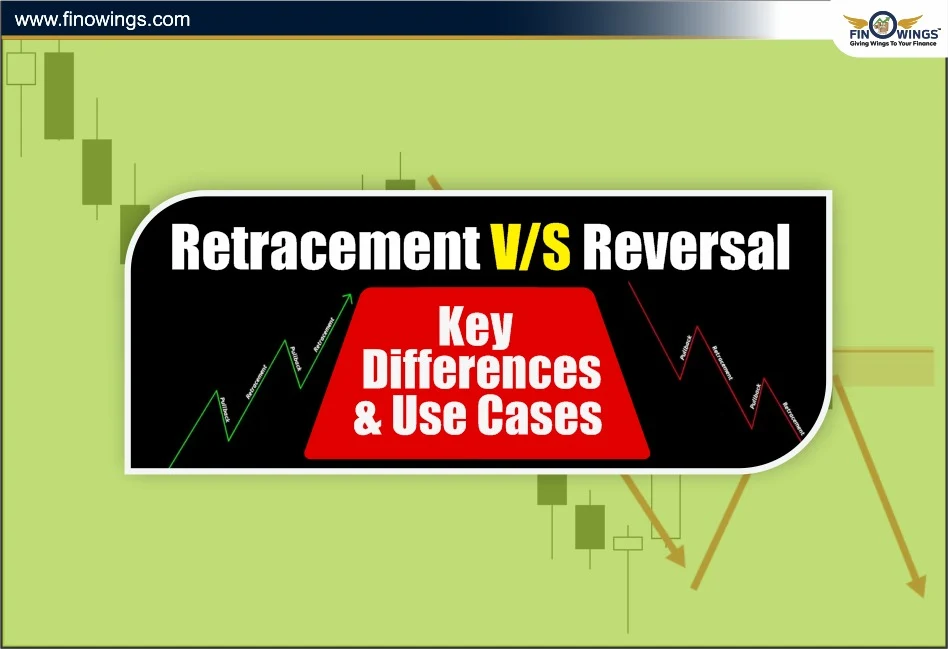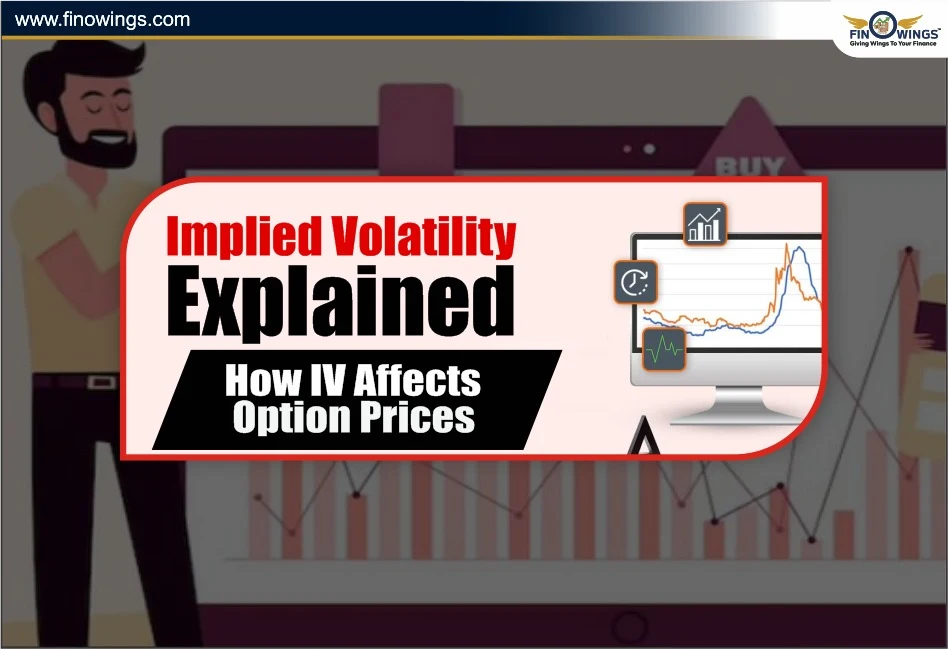Home >> Blog >> Retracement vs Reversal: Key Differences & Use Cases
Retracement vs Reversal: Key Differences & Use Cases

Table of Contents
Each trader will encounter situations where prices are moving in a certain direction and suddenly change direction. The biggest challenge is determining if it is a temporary change (retracement) or a permanent shift in trend (reversal). Recognising the difference can save traders from taking losses from presumed exits or misjudged entries. This is what separates the rookies from the pros.
This article will detail what retracement is in trading, what reversal chart patterns are, and the differences between retracement and reversals. This will help you trade with more confidence and in a more precise manner.
What is Retracement in Trading?
A retracement in trading is a short-lived decline that briefly moves against the trend in trading. In simpler terms, it is a halt or slight adjustment to the price action in the middle of an up or downward trend. This is not an indication of a full trend change.
e.g, if in an uptrend the price moves from ₹100 to ₹150, and then the price drops to ₹140 before moving up again, that little drop is a retracement. This is the market taking a “breather.”
Retracements can occur due to profit taking, minor news events, or short-term overbought/oversold conditions.
Key Features of a Retracement
-
Temporary: These are only brief pauses within the main trend.
-
Happen in Trending Markets: Retracements occur in uptrends and downtrends.
-
Lower Volume: Generally, there is a decrease in trading activity.
-
Maintains Structure: Price movements remain within critical support or resistance boundaries.
-
Great Entry Opportunity: Retracements are widely used by traders to enter the market in the direction of the main trend.
Example of Retracement in Trading
Let's say the stock price of ABC increases from ₹500 to ₹600. Once the price reaches ₹600, it falls to ₹570 before rising again to ₹650. The decline to ₹570 is a retracement, a short decline before the upward trend resumes.
Traders generally agree that the most popular and helpful levels for figuring out how deep a pullback will go before the trend is anticipated to return are Fibonacci retracement levels, such as 38.2%, 50%, or 61.8%.
What Is a Reversal in Trading?
A reversal in trading is when the price trend completely turns and the market sentiment changes from bullish to bearish or the other way around. Reversals, unlike retracements, signal a real change in market sentiment which can sustain for quite a period of weeks or months.
If a stock moves from ₹100 to ₹150 and then starts to decline and goes below ₹100 again, that’s a defined trend reversal; it indicates that an uptrend has ended and a downtrend has started.
Reversal Characteristics
Long-Term: A shift indicates a change in direction.
Large Volume: A change is marked with increased volume and volatility.
Pattern confirmation: Recognised based on candlestick reversal patterns and chart pattern reversals.
Key Levels: Prices break through essential support and resistance.
Emotion: Change in sentiment is most often supported by changes in fundamentals.
Reversal Candlestick Patterns
Certain candlestick shapes that show a current trend is waning are the beginning of reversal patterns. The most common reversal candlestick patterns are as follows:
1. Bullish Engulfing Pattern - Triggering an uptrend from a downtrend.
2. A bearish engulfing pattern - It indicates that an upswing is waning and that a downtrend is most likely imminent.
3. Hammer and Hanging Man - The hammer is bullish, while the hanging man is bearish.
4. Morning Star and Evening Star - Multiple-candle patterns that show shifts in the trend.
5. Doji - Shows the market indecision that tends to present itself around reversal areas.
Retracement vs Reversals: Key Differences
|
Feature |
Retracement |
Reversal |
|
Definition |
Temporary pullback within an existing trend. |
Complete change in the direction of the trend. |
|
Duration |
Short-term (minutes to days). |
Long-term (weeks to months). |
|
Volume |
Usually low. |
Typically high. |
|
Trend Structure |
Main trend remains intact. |
Trend structure breaks completely. |
|
Trader’s Approach |
Opportunity to buy the dip or sell the rally. |
Exit old positions and consider opposite trades. |
|
Example Tool |
Fibonacci retracement levels. |
Reversal candlestick or chart patterns. |
Retracements are corrections, while reversals indicate a change in overall trend direction.
How to Identify a Retracement vs Reversal
Here’s a simple checklist to differentiate the two:-
1. Use trendlines and moving averages
It is most certainly a retracement when a price bounces off a trendline. It is probably a reversal if it breaks above or below a trendline.
2. Observe the volume
Retracements are generally accompanied by a drop in volume. Reversals are confirmed with rising volume.
3. Pattern Confirmation
Use reversal candlestick patterns or chart patterns to confirm a trend change.
4. Spot Important Triggers
Significant policy changes, earnings shocks, or macro events usually result in reversals instead of retracements.
Reversal Chart Patterns
While candlestick patterns reflect the market's sentiment for a short period, reversal chart patterns serve to validate the change of a long-term trend. Some of the most trustworthy reversal patterns consist of:-
|
Pattern |
Type |
Indication |
|
Head and Shoulders |
Bearish |
Signals the end of an uptrend. |
|
Inverse Head and Shoulders |
Bullish |
Indicates reversal from downtrend to uptrend. |
|
Double Top |
Bearish |
Suggests the price failed twice to break a resistance. |
|
Double Bottom |
Bullish |
Indicates strong support and trend reversal upward. |
|
Rounding Bottom |
Bullish |
Slow accumulation followed by upward trend shift. |
These patterns, along with volume and moving averages, distinguish a retracement from a true reversal.
Use Cases for Traders
When to Trade Retracements
In an uptrend or downtrend, you should pause until you see offsets to the trend so you can enter for a better price.
Best options: Fibonacci retracements, support/resistance levels, and trendlines.
When to Trade Reversals
Reversal patterns that are confirmed and appear with significant volume.
Best options: Reversal candlestick patterns, chart patterns, and RSI/MACD divergences.
Practical Example
When the Nifty 50 price increases consistently from 21,000 to 22,000 then declines to 21,700 before rising once more this is known as an active retracement. When the price falls below 21,000 there is a significant decline when it stays below that level with significant volume there is a reversal.
By knowing the difference, the trader may decide whether to buy the dip or sell the transaction.
Tips to Trade Retracements and Reversals Successfully
1. Wait for Confirmation - A retracement cannot be assumed to be a reversal without the technical backing to prove it.
2. Incorporate Different Indicators - Use some of the following: moving averages, RSI, MACD, and volume.
3. Prioritise the Risk to be Taken - Be sure to set stop losses that are beyond critical key levels.
4. Keep Up to Date with Information - Key updates will result in reversals.
5. Market Trends - Take Time to Confirm.
Conclusion
Successful trading relies on differentiating retracements and reversals. A retracement in trading allows you to achieve a better entry price within an existing trend, while a reversal in trading indicates a price exit and suggests a change of direction. Traders analyse reversal candlestick patterns and reversal chart patterns along with other instruments such as Fibonacci levels to increase their chances of success.
Ultimately, success in trading is more than moving average predictions; it is understanding the meaning behind those predictions.
DISCLAIMER: This blog is NOT any buy or sell recommendation. No investment or trading advice is given. The content is purely for educational and information purposes only. Always consult your eligible financial advisor for investment-related decisions.


















